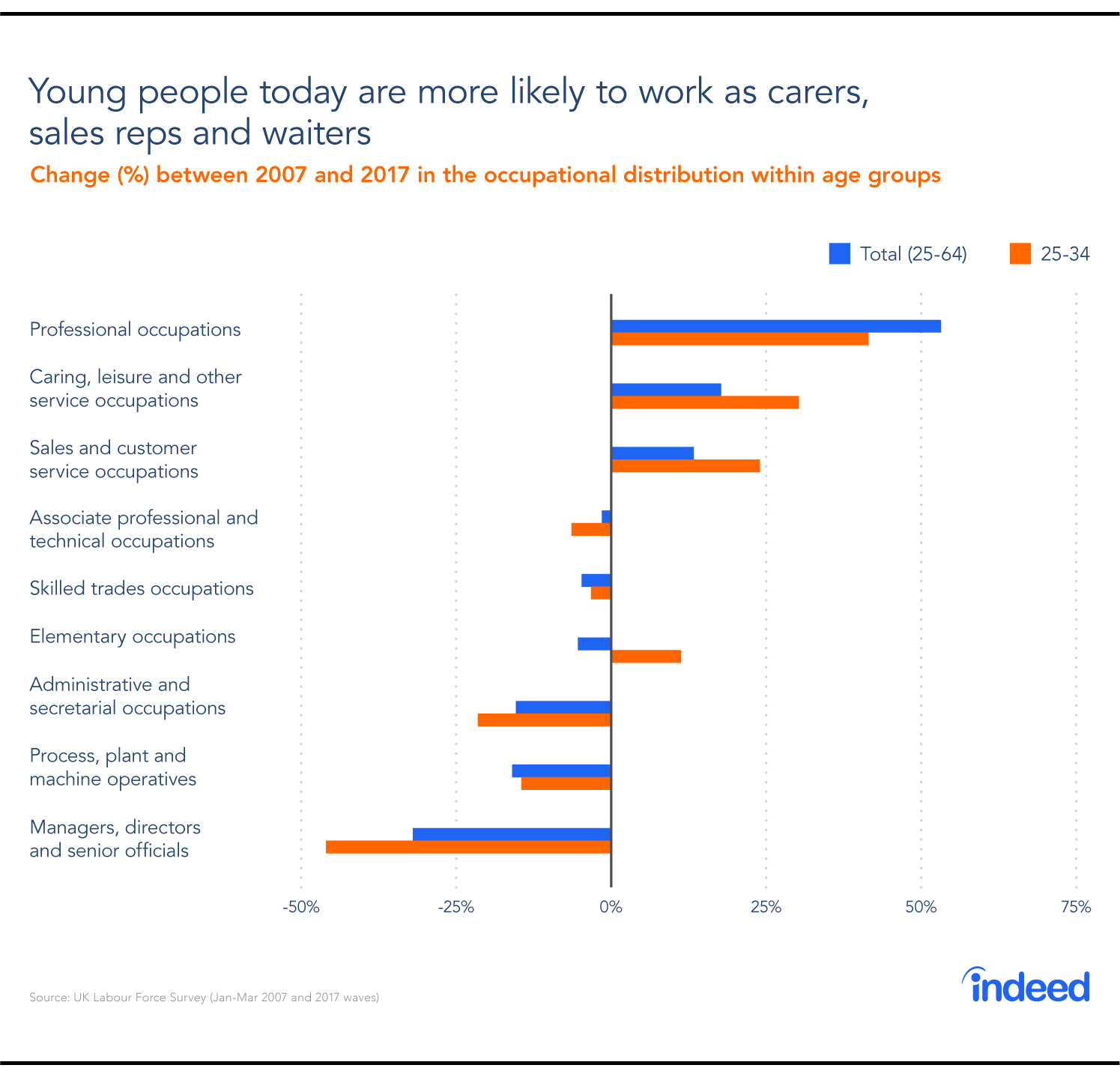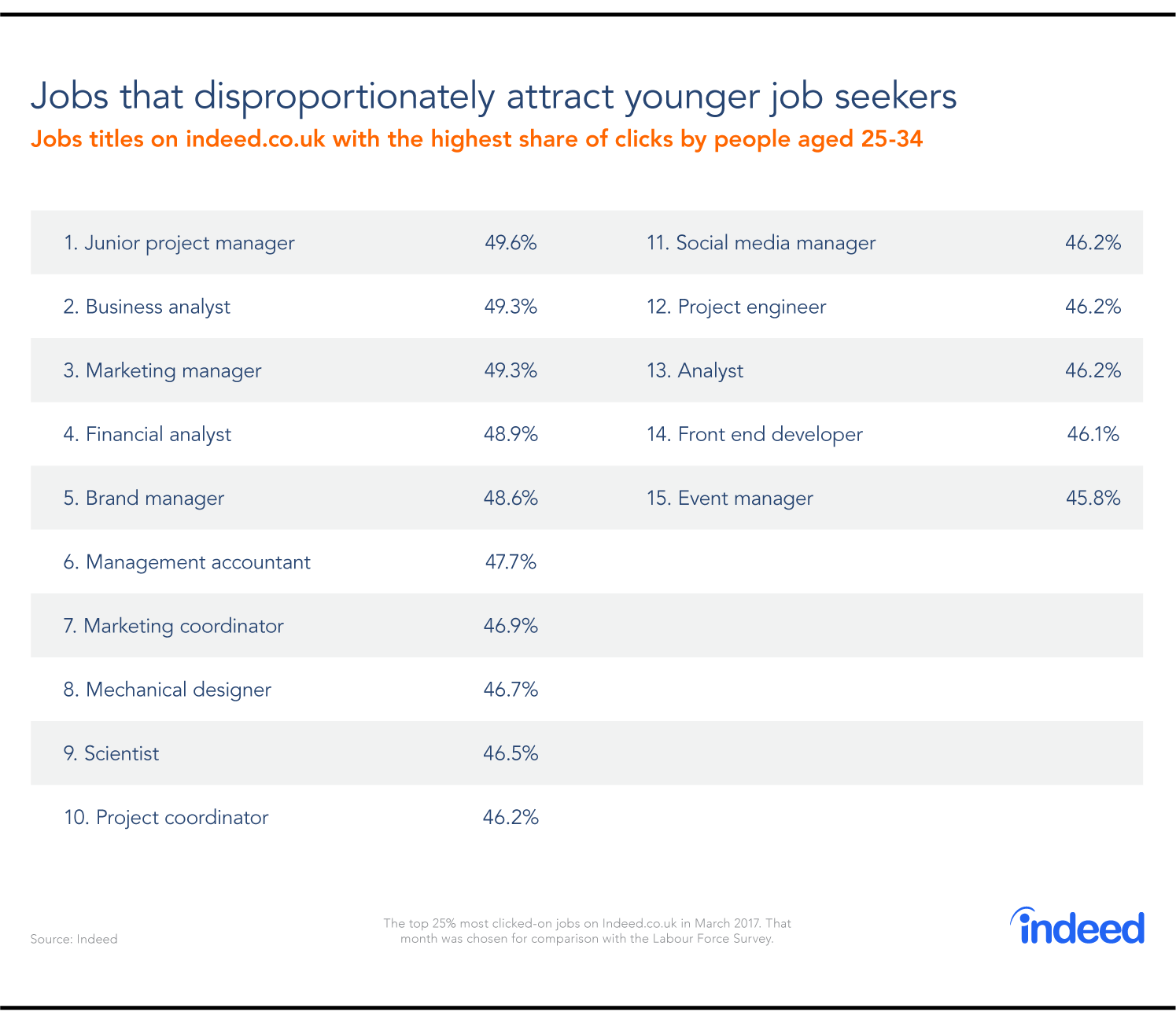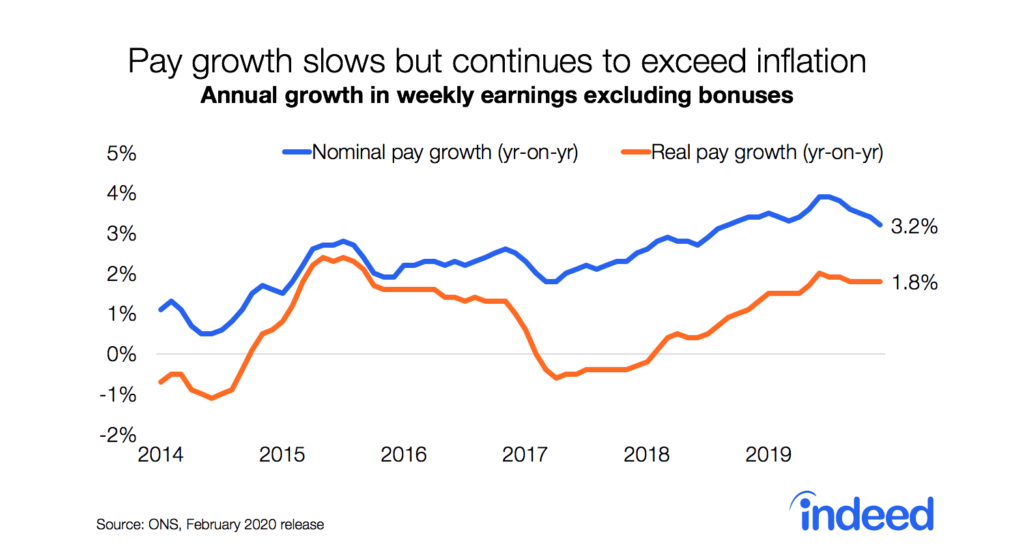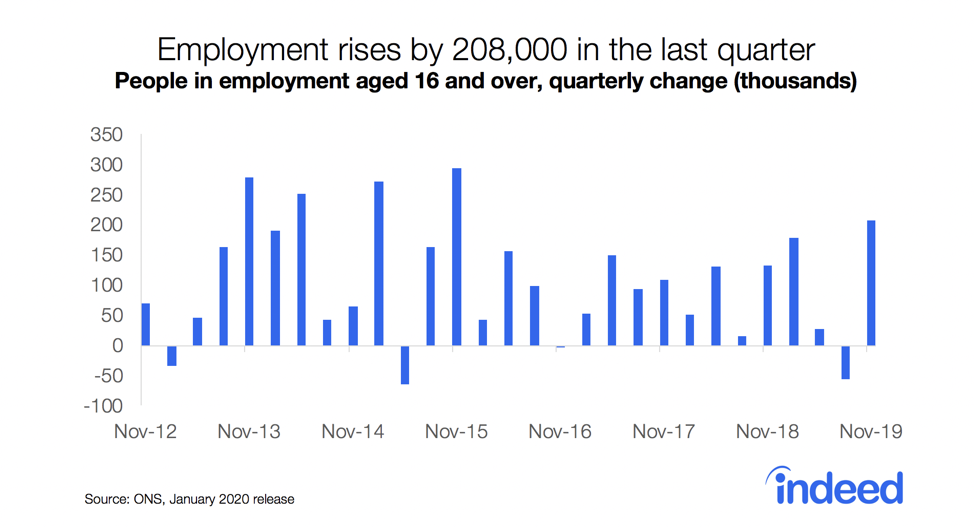The UK labour market has gone through a profound transformation since the financial crisis a decade ago. And young Britons who entered the job market during those years have been deeply affected. Compared with people of the same age in 2007, today’s younger workers have lost ground in professional jobs to older competitors and are more likely to be in lower-paid service occupations. What is more, after adjusting for inflation, their pay fell between 2009 and 2014 and has stagnated since then.
Yet hope springs eternal. Although younger workers often find themselves in lower-paid service occupations, Indeed search data indicate that a range of white-collar jobs that offer good pay and opportunities for advancement disproportionately attract younger workers.
How are the jobs young people do today different than those their counterparts held ten years ago? To get an answer, we looked at Labour Force Survey data to see how the shares of people employed in different occupations shifted over the past decade. We then focused on the young cohort—people between 25 and 34—to determine whether the mix of jobs young people hold today diverges from overall shifts in the labour market. That exercise shows to what extent the jobs young workers are doing today differ from what their age group was doing ten years ago, before the financial crisis hit.
Here’s what we found:
- Professional jobs are on a roll. Over the past ten years, the share of all British workers employed in professional jobs increased faster than the shares of any other category. After that, care, leisure, sales and customer service registered the biggest gains.
- Relative to older workers, young people today are more likely to work in a range of personal and customer service occupations, such as carers, sales reps and waiters.
- Indeed job search data show that many white-collar professional jobs disproportionately attract young Britons. Young people may currently work in personal and customer service occupations, but long-term work that pays well and provides a career is attractive to young workers.
The past decade saw large changes in the mix of jobs in the British labour market. Professional occupations registered the highest growth between 2007 and 2017. Administrative occupations and process, plant and machine operatives posted the biggest losses. British workers today are more likely to be nurses, teachers, IT professionals and medical practitioners, and are less likely to work as personal assistants, secretaries or welders. In addition, more people are self-employed or working part-time.
How have the jobs young people do changed?
Young people today are more likely to work as professionals compared with people of the same age in 2007, in line with the shift in the overall workforce. However, they lag other age groups in moving into professional occupations. This trend can also be seen in specific sectors. Information and communication, and finance and insurance, increased employment between 2007 and 2017. But the relative share of young people employed in these sectors compared with other age groups is smaller today than ten years ago.

Young people have lost ground in professional occupations relative to other age groups. But which jobs are they more likely to hold compared with the average worker? The big winners are caring, leisure and other service occupations, as well as sales and customer service.
Here is a particularly telling comparison: On average, the share today of people of all ages working in elementary occupations, such as cleaners, domestics, kitchen/bar staff, waiters, security guards and couriers, has fallen 5.4%. But the share of people between 25 and 34 in these occupations has risen 11.1%.
These changes in the job mix of young workers is one explanation for this group’s paltry wage growth. The pay for people of all ages has fallen since 2007 after adjusting for inflation, but that of younger workers has dropped most, according to research by the Resolution Foundation. Thus, workers who have entered the world of work since 2007 have seen their paychecks grow little or not at all early in their careers—just when pay usually rises most rapidly.
Which jobs do young people want?
When we look at the sheer number of clicks coming from young job seekers, we find that lower skilled manual jobs in the service sector receive the biggest volumes of clicks. A look at the job titles that get the highest number of clicks from young people as a share of all clicks to that job title on indeed.co.uk, however, presents a different picture. A range of professional jobs are attracting younger job seekers, even though young Britons are more likely than young workers in the past to hold jobs as carers, sales representatives, and waiters. These data show that while young workers may currently be working in caring and service occupations, they are a future resource for employers looking for workers to fill these white-collar positions.

Note: The top 25% most clicked-on jobs on Indeed.co.uk in March 2017. That month was chosen for comparison with the Labour Force Survey.
A tough decade for young Britons
In the past decade, the British job market has been on a rough ride. The UK first went through a deep recession. The recovery delivered solid job creation, but disappointing wage growth. Young people, more than any other age group, have borne the brunt of these twists and turns. The result has been a striking change in the types of jobs they are doing today compared with the job mix a decade ago. And that change has not been for the better as far as pay and job quality are concerned.






